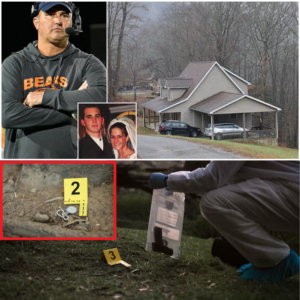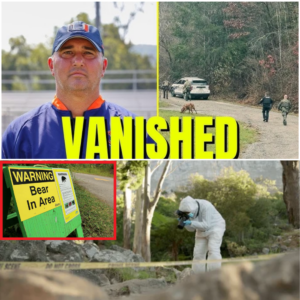On August 1, 2025, a Miami federal jury delivered a seismic blow to Tesla, the electric vehicle giant led by Elon Musk, ordering the company to pay $243 million in damages for a 2019 fatal crash involving its Autopilot system. The verdict, one of the first of its kind to reach trial, has ignited a firestorm of debate about the safety and marketing of Tesla’s self-driving technology. Legal experts are now warning of a “tsunami” of lawsuits on the horizon, as the case exposes a critical flaw in the promise of autonomous driving: a gap between Tesla’s bold claims and the reality of its technology’s limitations. As the world grapples with the implications, the question looms—what’s the secret behind Tesla’s self-driving tech that’s unraveling its trillion-dollar empire?
The crash occurred on April 25, 2019, in Key Largo, Florida, when a Tesla Model S, operating on Autopilot, sped through a T-intersection at 62 miles per hour, ignoring a stop sign and flashing red light. The driver, George McGee, admitted to reaching for a dropped cellphone, a moment of distraction that proved catastrophic. The Model S slammed into a parked Chevrolet Tahoe, killing 22-year-old Naibel Benavides Leon, who was stargazing beside the vehicle, and severely injuring her boyfriend, Dillon Angulo. The impact was so violent that Benavides was thrown 75 feet into a wooded area, her body discovered hours later. Angulo suffered a traumatic brain injury and broken bones, forever altering his life.
The Miami jury, after a three-week trial, found Tesla 33% liable, assigning $43 million in compensatory damages (one-third of the $129 million total for pain and suffering) and $200 million in punitive damages to deter future negligence. The driver bore 67% of the blame, having settled separately with the victims’ families. Tesla denounced the verdict as “wrong” and vowed to appeal, arguing that no car in 2019—or today—could have prevented the crash. “This was never about Autopilot; it was a fiction concocted by plaintiffs’ lawyers blaming the car when the driver admitted responsibility,” the company stated. Yet, the jury’s decision hinges on a deeper issue: Tesla’s marketing and design choices, which critics argue have dangerously misled drivers.
The secret fueling this legal reckoning lies in Tesla’s portrayal of Autopilot and its more advanced Full Self-Driving (FSD) system. Since its introduction in 2015, Autopilot has been marketed as a cutting-edge driver-assistance feature, capable of steering, accelerating, and braking on highways. Musk has repeatedly claimed that Tesla’s technology is safer than human drivers, predicting fully autonomous vehicles by as early as 2018—a deadline he’s missed multiple times. In public statements and X posts, Musk has touted FSD as a step toward a future where “manual driving will seem wild,” with Tesla vehicles poised to become robotaxis. Yet, the fine print in Tesla’s manuals warns that Autopilot requires constant driver supervision, a contradiction that lies at the heart of the controversy.
The plaintiffs’ lawyers, led by Brett Schreiber, argued that Tesla and Musk created a false sense of security. They pointed to Musk’s interviews and tweets, where he suggested Autopilot could “drive better than humans,” while failing to restrict its use to controlled-access highways, for which it was designed. In the Key Largo crash, McGee testified that he trusted Autopilot to assist him if he made a mistake, believing it would warn him or brake at the intersection. “I feel like it failed me,” he said. The jury agreed, finding that Tesla’s software had a defect that contributed to the tragedy, exacerbated by the company’s decision to allow Autopilot on roads it wasn’t suited for, like the rural Florida intersection.
This verdict marks a turning point, as it’s the first wrongful death case involving Tesla’s driver-assistance systems to reach a federal trial. Previous lawsuits have been settled out of court or dismissed, shielding Tesla from public scrutiny. But the $243 million award—comprising $43 million in compensatory damages and $200 million in punitive damages—signals a shift. Legal experts like Miguel Custodio, a car crash attorney, predict a “tsunami” of lawsuits, as the ruling emboldens others to challenge Tesla’s safety claims. “This will open the floodgates,” Custodio said. “It shows you can take on Tesla and win.”
The case also exposed troubling allegations about Tesla’s handling of evidence. The plaintiffs accused the company of hiding or losing critical data, including video and telemetry from the seconds before the crash. Only after a forensic expert recovered the evidence did Tesla admit to a “mistake,” claiming it hadn’t known the data existed. This revelation, coupled with the jury’s finding of a defective product, has damaged Tesla’s reputation as a safety innovator. Financial analyst Dan Ives called the verdict “a black eye” for Tesla, noting its potential to ripple through the industry as other automakers develop similar technologies.
The broader context is dire for Tesla. The National Highway Traffic Safety Administration (NHTSA) has documented at least 467 collisions involving Autopilot, including 13 fatal crashes, highlighting a “critical safety gap.” A 2023 recall of 2.3 million Tesla vehicles addressed issues like failure to stop at intersections or yield to traffic signals. In California, the Department of Motor Vehicles is suing Tesla for false advertising, arguing that terms like “Autopilot” and “Full Self-Driving” mislead consumers into believing the cars are fully autonomous. These regulatory battles, combined with the Miami verdict, threaten Musk’s ambitious goal of launching a nationwide robotaxi network by the end of 2025.
The “secret” behind Tesla’s self-driving tech isn’t a single flaw but a combination of overpromising and underdelivering. Unlike competitors like Waymo, which uses expensive lidar and radar sensors, Tesla relies solely on cameras and AI, a cost-effective but less proven approach. Musk’s insistence on this vision—coupled with his public hype—has created unrealistic expectations. Drivers, lulled by names like “Autopilot,” may overestimate the system’s capabilities, leading to distractions like McGee’s. The Insurance Institute for Highway Safety recently gave Tesla’s systems poor ratings, citing driver confusion over their limitations. As one plaintiff lawyer put it, “Tesla turned our roads into a beta test for unproven technology.”
For Musk, the timing couldn’t be worse. Tesla’s stock fell 1.8% after the verdict, reflecting investor concerns about its $1 trillion valuation, which hinges on autonomous driving and AI. The company faces declining electric vehicle sales amid global competition and a backlash against Musk’s political stances, including his support for President-elect Donald Trump. The recent disappearance of Musk’s son X Æ A-Xii from an Austin preschool, though resolved quickly, added personal strain to an already tumultuous period. Yet, Musk remains defiant, posting on X about Tesla’s safety innovations, like its glass roof, while dismissing critics as “haters.”
The human toll of the Key Largo crash remains at the forefront. Naibel Benavides Leon, a vibrant young woman, was robbed of her future, her body found in the woods after a night of stargazing. Dillon Angulo, now living with permanent injuries, walked into court with a limp, a stark reminder of the stakes. Their families, emotional after the verdict, hugged their attorneys, finding a measure of justice. “We finally learned what happened that night,” said Benavides’ sister, Neima. “The car was defective.”
As Tesla prepares to appeal, the verdict’s implications are profound. It challenges the narrative that autonomous driving is inherently safer, forcing a reckoning on how companies market these systems. Other automakers, using terms like “driver assist” or “copilot,” avoid the bold claims Tesla embraces, potentially sparing them similar legal fallout. For consumers, the case underscores the need for vigilance when using driver-assistance systems, which remain far from fully autonomous.
The predicted “tsunami” of lawsuits could reshape Tesla’s future, forcing costly settlements or design changes. It may also slow Musk’s robotaxi ambitions, as regulators demand stricter oversight. For now, the world watches as Tesla navigates this crisis, its self-driving dream tested by a tragedy that exposed the gap between vision and reality. Will Musk adapt, or will the weight of accountability crash his empire? Only time will tell.


